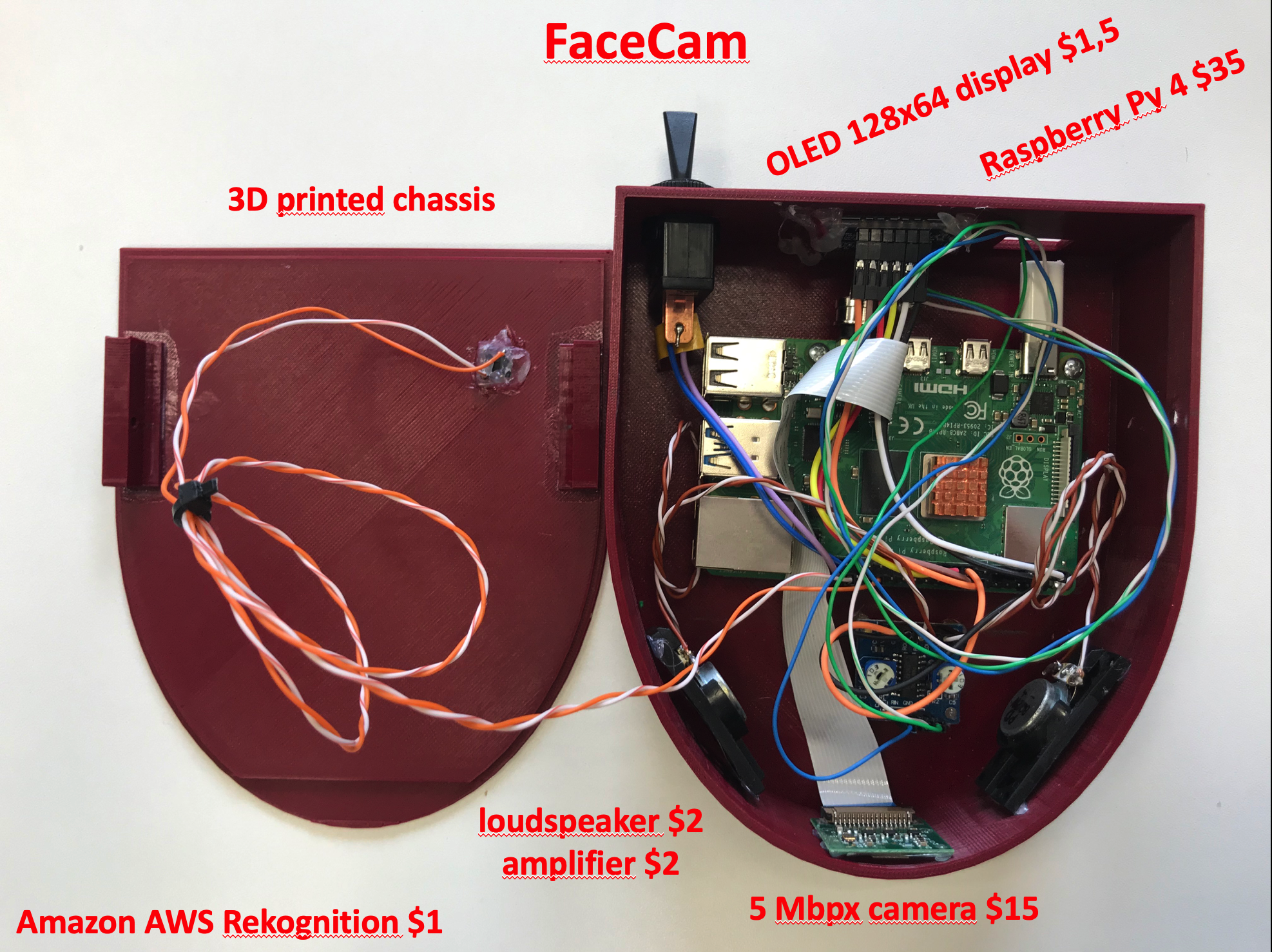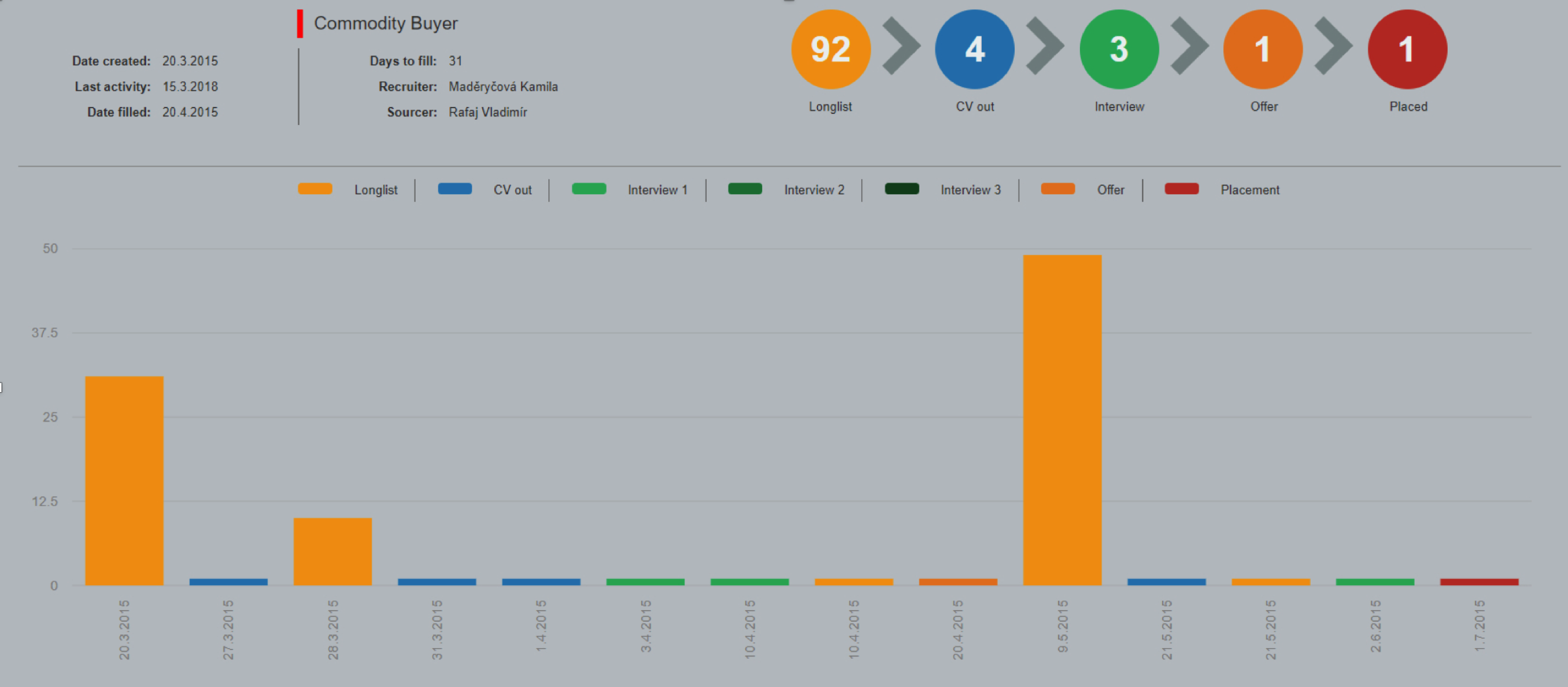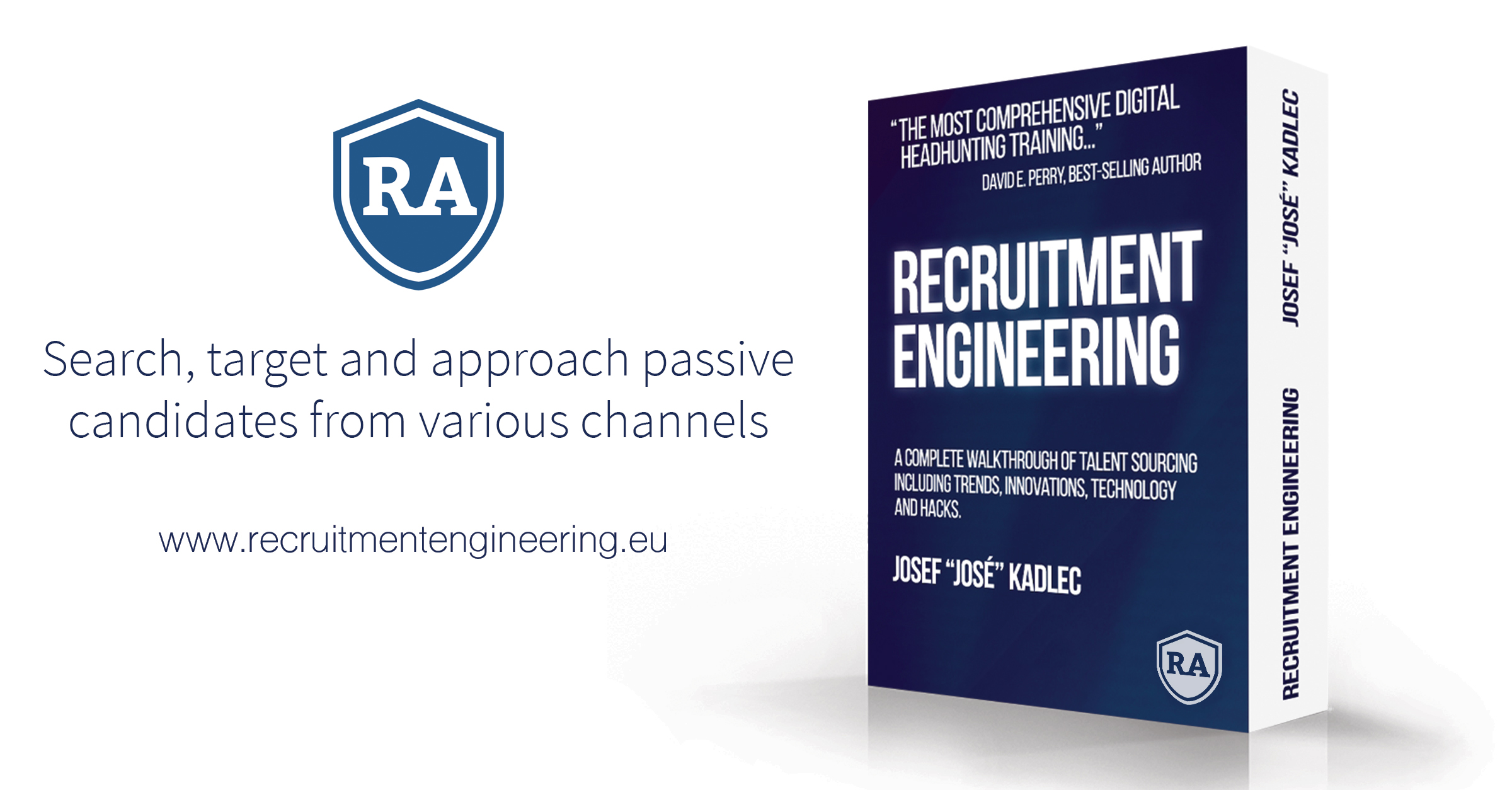Some people attain success by bucking the current trends. In my case, I would attribute my major successes to doing things before they were actually trending. I have to admit, in most cases, this was by accident – the result of simple trial and error.
We live in a complicated world and when someone says that a prediction is “AI”, that is simply too vague and generic. Yes, there are examples of AI in most industries - some of them more practical and sophisticated. Some of them maybe still more in a prototype stage. The important thing is how you define and apply AI in your industry and geographical area. i.e. A use-case which sounds great in the US might not be applicable in Central & Eastern Europe due to linguistic and cultural differences.
1) Outbound Sourcing More Difficult
One big reason for this is the increased collection of personal data for various analytics purposes including what we would categorize as AI. AI (deep learning, machine learning, neural networks, etc.) actually exists because of data – inputs from AI generate outputs which can predict something: facial recognition of a picture, a deep fake video, a robot playing a chess match, breast cancer diagnostics, etc.
This is why AI is so popular in China. China is pretty much a surveillance state so these technologies are supported greatly by the government and the great thing for AI companies in China is that there is a ton of data. Because there are so many transactions of every kind - like online food delivery, bank loans, rented bikes, shared taxis, etc. there is more food for AI, and this generates more precise results.
This is creating an issue with the privacy of personal data. The current trend is to give the control over personal data to individual users who manage it on their own .
When doing talent sourcing, we work with personal data and look for people based on their personal attributes, and this is where the clash occurs.
You have probably heard about the Cambridge Analytica affair. That was the aha moment for Facebook which forced them to take better care of the personal data of their users. It was also reported that Facebook was providing data about its users to companies like Netflix, Microsoft and Spotify. Since then, some of Facebook’s features have been shut down including it’s so called “graph search”. Many of you probably used sourcing tools such as the Intelligence Search plugins my Shane McCusker, Stalkface, Searchisback, Whopostedwhat, Graph.tips, etc. None of these tools currently work and it makes Facebook sourcing extremely challenging.

And Facebook has also restricted events and pages. Check my webinar on Facebook sourcing if you wish to know more.
LinkedIn also made one change you may not have even spotted. You are no longer able to export the full list of your 1st degree connections including e-mail addresses..
And it’s not just a social media problem. There is a new regulation called GDPR (General Data Protection Regulation) in Europe which means that some of the databases have been cleared out (like WHOIS database with domain owners). Because of GDPR you can no longer register with some of US services.
Don’t get me wrong, GDPR is good for many reasons such as the unification of data protection laws across Europe which is pretty important when you develop a service like ATS where you handle personal data and you want to do it across the board. There are some other new regulations like the Consumer Privacy Act in California, USA. Anyway, it has a fairly more negative effect on the outbound techniques of sourcing candidates as we know them.
What this means for daily sourcing is that when you want to dig deeper for candidates beyond just LinkedIn, not everyone will be able to do it. For example, advanced Facebook sourcing requires a certain skillset including automation and scraping tools.
At GoodCall we plan to assign this work to a dedicated person (let’s call her/him a supersourcer) or team who will be producing just lists of people. This goes along with the trend of breaking down the sourcing process into smaller bits to be more efficient and automating the sourcing process. It’s simply too much knowledge, work and tools for one sourcer to do the whole process properly from longlisting, enriching, approaching, pre-screening and shortlisting.
What you should do:
Try to stay up-to-date regarding the latest talent sourcing techniques. Consider creating a supersourcer position in your organization. If this is not possible for you, think of dedicating part of this talent sourcing process to an RPO/rented talent sourcer or a 360 recruiter who can support your company with the necessary know-how.
2) Stronger Focus on Inbound over Outbound
This is also a result of increased personal data protection and more demanding outbound sourcing. One solution is to create a stronger inbound pipeline of candidates. This will be more natural for inhouse TA teams as opposed to agencies, but is definitely applicable to both.
Probably the most common inbound recruiting tactic is advertising on job portals such as Indeed. Due to the fact that the unemployment rate is very low in Western markets this remains useful for only specific types of roles.
There is also a new trend of 3rd party portals. You can show off your company, culture, offices and employees through services such as TheMuse.com or Welcometothejungle.com (the latter just penetrated the Central & Eastern Europe market by acquiring the company Proudly).
Candidates can also apply via 3rd party industry-specific job marketplaces such as Workshape.io, Techloop.io or Binary-jobs.com. These portals provide a customized experience with relevant job offers and put job search ownership into the hands of candidates which was the thing they lost on LinkedIn – especially when we talk about software developers.
If you want to improve your inbound recruitment pipeline, you would probably start with your overall employer branding strategy (e.g. defining your Employee Value Proposition - EVP) which you would reflect through content creation (career website, career video, job visuals and videos for social media) and distribute it via social networks, per-pay-click advertisements, mailings, etc.
Many companies forget that they usually have a great pool of candidates in their own ATS database which can be mined using inbound techniques – e.g. provide them with relevant content such as articles on your blog or retarget them with Facebook/Google ads.
Another possibility is to invite them to your Meetup or Hackathon – events are a trendy inbound method to get potential candidates close to you. They create a strong bond, and further communication can turn them into employees eventually.
One of the other trends we see with our clients is to approach former employees. This untapped alumni group is sometimes very large and has been overlooked as a potential source of talent by many companies.
The number of ways you can increase your inbound is very high. There are many content formats (videos, live videos, podcasts, webinars, stories, blog, etc.), numerous social media and websites. Technical spiel (remarketing, SEO, programmatic advertising, PPC) is needed to put all these together including tracking, optimizing budgets for PPC and get optimal ROI. That’s why so-called RMPs (Recruitment Marketing Platform) are becoming more popular. These tools combine ATS, CRM, career sites, events, and integration with social media.
What you should do:
Audit your employer branding activities and inbound recruitment channels including job advertisements, social media, events and others. The ultimate goal is to maintain the community of your desired professionals by providing relevant content to them and managing the inflow of followers.
3) HR Tech Evolving Fast but Held Back by Regulations and User Backlash
The big hype of Industry 4.0, robotization, and AI has made it to the staffing industry some time ago. There is no question that the improvement of emerging technologies has grown exponentially in the past few years but the question is: what is the actual speed of implementation in talent sourcing and recruitment?
Cool and futuristic things you could only imagine recently can be built in a garage environment. Imagine this: at the recent Evolve Summit and Sourcing Summit in Israel, I introduced a home-made face recognition device we call FaceCam. We built it at our office from scratch!

Take a glimpse inside the 3D printed chassis:

A device which takes a picture and recognizes the person in the image. In addition to the person’s LinkedIn information, such as job and company, it also shows a percentage of similarity/accuracy. This is a real application of AI (Artificial Intelligence)!

As you can see, it’s a 3D printed chassis with an embedded Raspberry Pi computer, 5 Mbpix camera and display. The overall cost is under $50 and requires approximately two days of actual development.
If our team at GoodCall, Datacruit and Recruitment Academy can do something like this, what are the big boys at Microsoft, IBM, Workday, SAP, and others able to do?
According to Josh Bersin, HR tech is a $300 billion industry. Microsoft is entering the HR tech space with their MS Dynamics. IBM claims that they can predict attrition with a 95% accuracy rate. Imagine how this can support HR teams in so-called predictive recruitment. You could theoretically know when a group of employees is about to leave and design a personalized retention program for them.
Maybe you have heard of deep fake videos. This is actually also an application of AI (neural networks) where you can put anybody’s face on someone else’s body. An MIT team created a video of what Nixon’s apology would look like after a failed Apollo 11 Moon mission. So far, this announcement was just on paper in case of the worst case scenario.
If you have seen the new movie The Irishman, you could see a 30 year younger Robert De Niro which used deep fake technology as well. Another well done fake video is with comedian Jim Meskimen.
The same can be done with voices. Try Lyrebird for example. Or you can create images of realistic looking people who never existed with Nvidia StyleGAN. Maybe you saw the Chinese news anchor. He’s not real either.

What does it mean? First, actors can become immortal. And second, you cannot trust anything that you see and hear in digital form.
You have probably heard a lot about chatbots in recruitment. With the help of technologies such as natural language processing the chatbots can actually become more sophisticated. They can evolve from simple robotic processing automation engines into conversational AI engines. And of course, there are voice bots already. E.g. McDonalds set their job application process with a voice bot called Apply Thru based on Amazon Alexa and Google Home.
Anyway, back to recruitment and people analytics. As I already mentioned, to have a really reliable and functional AI you need to feed it with a vast amount of data to input the AI algorithms and teach the system quickly.
While meta data were just an unnecessary programming overhead in the past, in today’s world this is actually the currency. Sometimes the correlations you can find are almost unbelievable. For instance, one Chinese loan application found a correlation between how much smart phone battery charge you typically have and and the capability to pay off a loan. The more charged your mobile battery, the more likely you will be paying installments on time.
I have suggested that a face recognition device could be used as a smart timesheets. One company actually used a professional device of this sort at a construction site to maintain security and safety of their employees through controlling entry. The office for personal data protection found this to be against the law because the solution was too invasive when just a simple reception would be a solution.
So, it goes back to privacy. I recommend the book The Age of Surveillance Capitalism by Shoshana Zuboff. You will find out, for example, that the Pokemon Go augmented reality app was actually a secret project by Google.
What you should do:
Try to be more tech savvy. Build recruitment activities on a strong base which might be a practical ATS providing you with reports you can actually use for people & recruitment analytics purposes. Then you can think of implementing some progressive technologies such as chat/voice bots to either save time during the application process or to increase engagement (e.g. FAQ chatbots).
4) All Employees Involved in the Sourcing Process
In my previous articles and videos I talked a bit about making your sourcing teams more effective by splitting the sourcing function into more parts. The basic split might be that you have sourcers who are doing longlists and enrichment of data only. Another group of sourcers can take these enriched longlists and proceed to approach candidates. This might make both of these parts more successful therefore maximizing the sourcing output.
Still this is just an internal shuffle and a candidate doesn’t care if he or she was found by one sourcer and approached by another one. They don’t even know. The game changer is when the approaching phase is done by a hiring manager, team leader, CEO or any other relevant authority with regard to the role and/or company. Suddenly the response rate is significantly better. As an example, see this video job description from actual backend developers.

There are companies who operate in this regime and you would not be surprised when I tell you that they are tech companies. As a former software engineer, I can tell you that the approaching phase is a bottle neck - especially for this group of professionals. That’s why the longlists are so long but solving the issue just through volume is a short-sighted step.

So, as you can see, the trend is to avoid isolation of the TA teams (which has its limits) and the first companies who exploit this will definitely have a competitive advantage. There are challenges coming from this such as needing better candidate processing – the ability to share recruitment processes from the ATS to the involved employees including communication and vice versa.
Employees can also greatly support an employer by using their own personal brand. A minimal contribution can be liking, commenting and sharing company content on LinkedIn, Facebook, Instagram and such. The next level is to create some posts on your own and elevate your employer’s brand.
Maybe you are a team leader looking for a new team member – you can post on your own with a higher organic reach than HR posting via a company social channel. A personal account usually trumps the content posted by a company account. If you have time to do more, i.e. write an article, share a presentation or a video, you can expect some visible results. The important aspect is authenticity.
So, recruitment activities go deeper in companies wishing to sustain competitiveness in a tough job market. We see that trend at Recruitment Academy with a higher demand for training of hiring managers who also need skills such as business personal branding, LinkedIn skills, interviewing, diversity in recruitment, etc.
What you should do:
Do not isolate the recruitment activities just within your TA team and try to take advantage of other employees in the organization to gain a competitive advantage and strengthen your candidate pipeline. Train those people how to leverage their personal brand and the basics of talent sourcing (I might help you with this).
Conclusion
Dividing these trends into 4 major points is just for the purpose of structuring the article for better reading. As you may notice, all 4 points are linked together. Because of personal data protection, the outbound sourcing is tougher. That’s why we need to focus more on inbound sourcing. Personal data together with other data points are input for AI and related technologies. And if you want to implement parts of AI such as automation you need to break down the recruitment process by putting the approaching phase into the hands of business rather than HR, which just might lead to an increased response rate!
I hope you got some inspiration from this, but always use your good judgement.
Happy hunting!
Follow me (LI, TW, FB, IG) for more updates.
--josé
